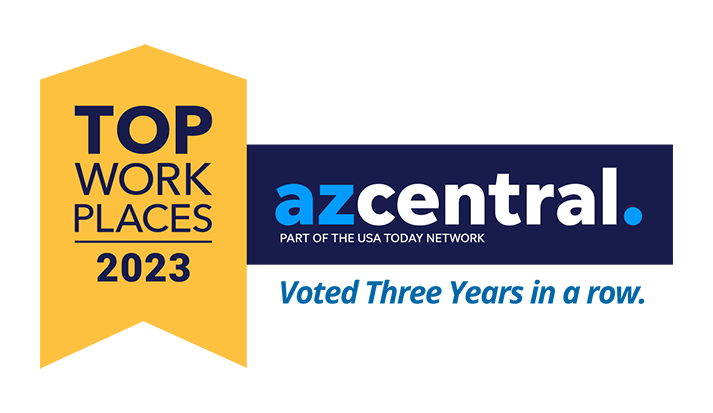California often marches to the beat of its own drum. This is particularly evident in the construction industry, especially in prevailing wage jobs. For example, the Golden State requires apprentices for each public works job and monitors training with a watchful eye. On top of that, they enforce training contributions and special reporting for all jobs with state or federal funding, including compliance with the Das 140 form.
Need software to manage your time, HR, & certified payroll? Get a FREE DEMO of eBacon today!
- California Contractor Apprenticeship Rules
- DAS 7 Form
- DAS 140 Form
- DAS 142 Form
- Reporting Rules
- A-1-131 California Public Works Payroll Reporting Form
- Training Fund Contributions Form CAC2
- Understanding Davis-Bacon Act and Prevailing Wage in Federal Construction Contracts
- How Construction Payroll Software Can Help
- FAQ for Basic DAS140 and DAS142 Forms
California Contractor Apprenticeship Rules
Unlike most states, California requires contractors on public works projects of more than $30,000 to hire apprentices for those jobs, regardless of union affiliation. Laws stipulate apprentices should work at least one hour for every five journeyman hours on a project (20%).

The Division of Apprenticeship Standards (DAS) was created to meet these demands and help Californians gain labor skills. They collaborate with local contractors to develop apprenticeship programs, guide them in attaining apprentices, or grant exemptions to the hiring requirements.
As part of the qualifications, each company on a public works project must provide staffing data with a DAS 7, or DAS 140, and DAS 142.
DAS 7 Form
For organizations that already employ apprentices, a DAS 7 Agreement to Train Apprentices Form must be submitted to the Apprenticeship Training Program for approval to continue to train them on a new project.
Organizations that do not have a DAS 7 approval form must continue with DAS 140 & 142 forms to all apprenticeship committees related to their specific crafts.

DAS 140 Form
The purpose of the DAS 140, also known as the “Notification of Contract Award,” is to make various apprenticeship programs aware that a company will soon be requesting onsite apprentices. It can be found here: https://www.dir.ca.gov/das/dasform140.pdf, and with it contractors estimate journeyman hours, number of proposed apprentices, and approximate project dates.
Once trades are selected, the paperwork goes to apprenticeship committees for each trade to be used (local apprenticeship committees can be found here: http://www.dir.ca.gov/databases/das/aigstart.asp). The DAS 140 should be submitted within 10 days of the contract being signed or no later than the first day workers are employed on the project.

DAS 142 Form
Contractors that don’t already employ enough registered apprentices to meet the 20% apprentice-journeyman ratio must ask for them from at least one apprentice committee for each craft. This is done with the DAS 142 form, Request for Dispatch of an Apprentice, that can be found here: https://www.dir.ca.gov/das/dasform142.pdf.
The Das 142 must be sent at least 72 hours before the official start date of the apprentice. When the project ends, contractors must provide documentation showing fulfillment of the dispatch request and the sufficient number of apprentices that worked, or the exemption paperwork.

Reporting Rules
Like federal projects, contractors on California public works jobs are required to submit certified payroll reports to the state at least monthly. On top of that, they’re obligated to report data and pay fees to the California Apprenticeship Council (CAC), which was created so the state can assure that new apprentices receive trade training while older craftsmen retire.
A-1-131 California Public Works Payroll Reporting Form
The California A-1-131 is similar to the WH-347 for federal projects, but is used to report payroll data for state projects. The form is for informational records only, and the state requires online submission via the DIR here: https://www.dir.ca.gov/public-works/certified-payroll-reporting.html.

Training Fund Contributions Form CAC2
Apprenticeship needs don’t end once the project is staffed and paid correct wages. California contractors must also make monthly contributions of training fee fringes to the CAC.
Once apprentices are paid according to wage determination percentages, contractors must process a report and submit the CAC2 Training Fund Coupon that details employees by classification, hours, and amount contributed toward the Training Fund.

Understanding Davis-Bacon Act and Prevailing Wage in Federal Construction Contracts
With all prevailing wage jobs, rules are strict. In California, apprentice obligations add another layer, but following the steps below can help keep you compliant. It’s good business practice to submit everything in a timely and accurate manner to avoid fines or worse.
- Submit the DAS 140 form once the contract is awarded.
- File a DAS 7 form if you already employ apprentices.
- Request apprentices using the DAS 142 form if you need apprentice staff.
- Monitor to meet the correct apprentice-to-journeyman ratio.
- Submit certified payroll reporting for your job.
- Make monthly CAC training fund contributions.


How Construction Payroll Software Can Help
eBacon knows California prevailing wage projects can bring even more pain than other states. While we don’t help with hiring, we can help make the rest of the process much easier to tackle.
We work tirelessly with California contractors to meet their unique needs, supplying Apprentice Journeyman Hours Ratio reports to keep you in compliance, Training Fund Contribution reports that pull your information together in an easy-to-read manner, and automated CA DIR Exports that allow you to upload your certified payroll records in minutes.
We also create easy union, workforce, fringe benefit, federal certified payroll, and other reports for our clients. We can process your payroll quickly with the correct prevailing wages and apprentice rates because we do the background legwork and know our stuff.
Our goal is to make prevailing wage easier and faster to save our clients time and headaches. Click below to get a free demo of the eBacon software NOW!
Additional Resources
- Contact DAS here.
- Download form DAS 140 here.
- Learn about the next step in using apprentices in California with form DAS 142 here.
- Learn more about public works apprentice requirements here.
Get Started with eBacon Today
FAQ for Basic DAS140 and DAS142 Forms
What is the difference between the DAS 140 and DAS 142 forms?
DAS 140 and DAS 142 are both financial reporting standards, but they differ in scope. DAS 140 focuses on accounting for investment properties, while DAS 142 deals with accounting for intangible assets. While DAS 140 guides reporting on tangible assets like real estate, DAS 142 addresses the recognition and measurement of intangible assets such as patents or trademarks. The distinction lies in their respective areas of financial reporting, addressing different asset types for transparent and accurate financial statements.
How to contact the applicable apprenticeship committees in the area of the project?
To contact the applicable apprenticeship committees in the area of the project, you can use the following steps:
- Identify the craft or trade of the apprentices you need for the project, such as electrician, plumber, carpenter, etc.
- Visit the Division of Apprenticeship Standards (DAS) website and click on the link for “Sub-committees of the California Apprenticeship Council”.
- Find the sub-committee that corresponds to your craft or trade, such as “Electrical”, “Plumbing”, “Carpentry”, etc.
- Click on the link for the sub-committee and you will see a list of the members, their positions, and their contact information.
- You can also use the DAS search tool to find the apprenticeship programs and committees in your area by entering the county, craft, and program name.
What are the training fund contributions and minimum ratios for apprenticeship?
Specific training fund contributions and minimum ratios for apprenticeship programs can vary by industry, location, and relevant regulations. It’s crucial to consult the guidelines provided by the governing apprenticeship agency or labor department in your jurisdiction. Typically, contributions to training funds are determined through negotiations between employers and labor organizations. Check the latest apprenticeship standards or contact the appropriate regulatory agency for the most accurate and up-to-date information regarding training fund contributions and minimum ratios in your specific context.
Personal Protective Equipment Standards: What You Need to Know About OSHA’s Smart New Guidelines
Working in construction can be demanding. Juggling intricate tasks while wearing bulky Personal Protective Equipment (PPE) can feel frustrating and…
Communication is Key: What You Need to Know NOW About HR Strategies and Prevailing Wage
Clear and consistent communication is the bedrock of any successful construction project. But on prevailing wage projects, where strict government…
Construction Workforce Shortages: How to Attract and Retain the Best Workers
Contractors, it’s time to acknowledge a tough reality: construction workforce shortages have been an enduring issue on job sites for…
FTC Non-Compete Clause Rule Changes for Construction Payroll: Everything You Need to Know Now
In the world of construction, where projects are dynamic and workforce needs fluctuate, the recent announcement from the Federal Trade…
Independent Contractors: What You Need to Know to Protect Your Construction Business Right Now
Using independent contractors on your construction projects can seem like a win-win. They bring specialized skills and flexibility, often working…
Staff Up Now! HR Strategies for Clean Energy Construction
Construction worker shortage drama? It’s the same obstacle recognized by many labor industries throughout the country: There’s plenty of work…
The material presented here is educational in nature and is not intended to be, nor should be relied upon, as legal or financial advice. Please consult with an attorney or financial professional for advice.















